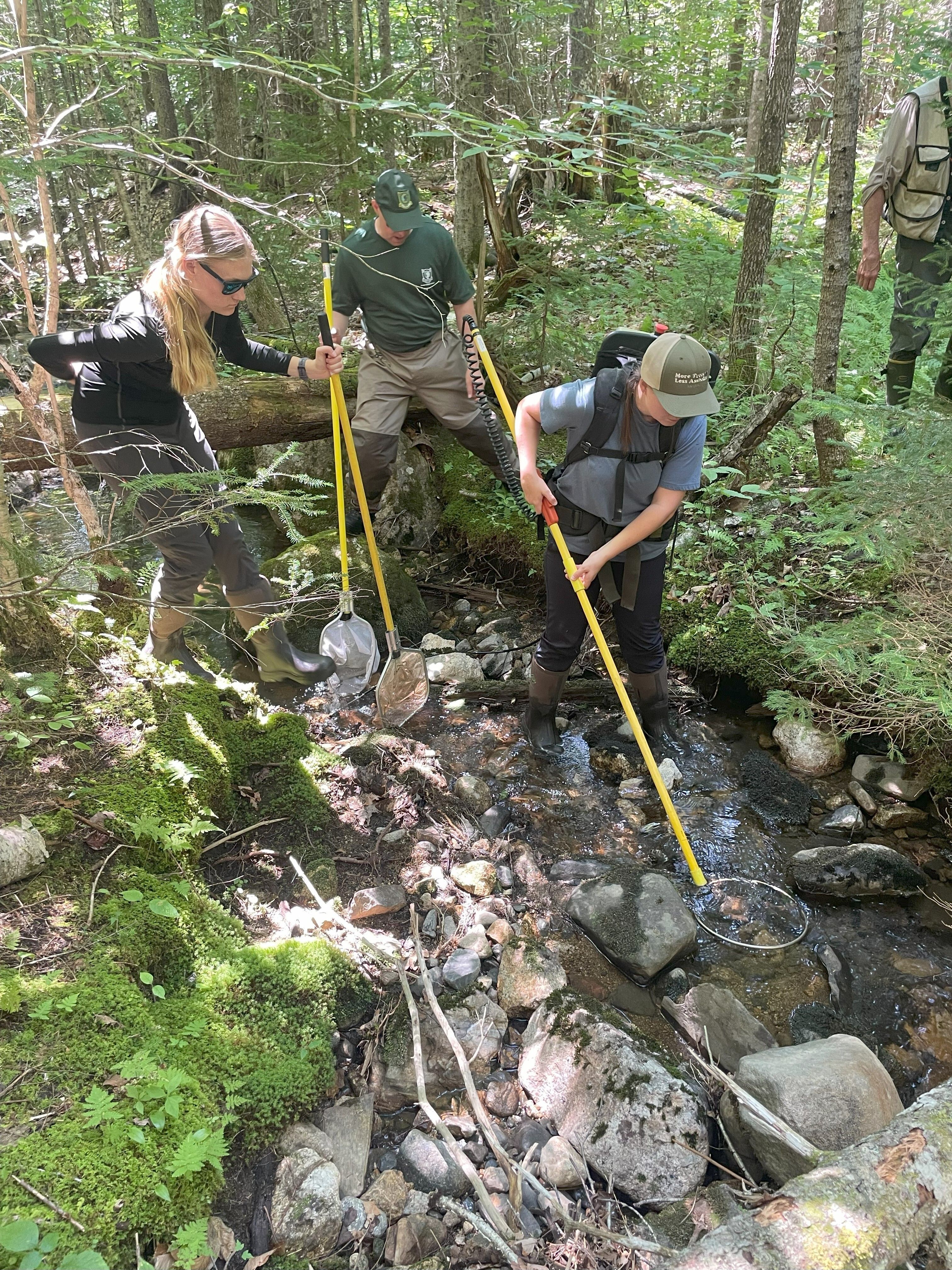Each summer, two interns join the Tin Mountain research team to improve parameters of stream health. Stream restoration has numerous benefits including increasing brook trout habitat, increasing macroinvertebrate diversity, diversifying streambed substrates, and mitigating climate-related flooding events. Our efforts include:
Large Wood Additions
Since 2010, TMCC has partnered with federal, state, and nonprofit conservation agencies to restore first and second-order streams by adding "woody additions" with the goal of enhancing brook trout habitat. However, we quickly learned that the entire freshwater stream ecosystem is enhanced by this practice as it provides better environments for numerous stream-reliant organisms. Furthermore, the addition of large woody pieces increases the total instream percent of wood coverage which slows down water velocity, allowing for higher nutrient retention and also mitigating the effects of downstream flooding.
Pre- and Post-Treatment Biological Assessments
Both before and after large wood additions, researchers with Tin Mountain Conservation Center evaluate several aspects of stream health to quantify the ecological impact of the woody additions. To establish baseline conditions before wood is added, we collect data on established indices of biological integrity such as water chemistry, in-stream habitat conditions, and presence of benthic macroinvertebrates. Additionally, we conduct electrofishing to sample the existing fish populations. The same data collection regime is repeated soon after placing woody additions, as well as in subsequent years, to evaluate biotic changes to the stream and to quantify improvements to stream habitat.




